Pop-up Exhibition Promotes Bodily Autonomy
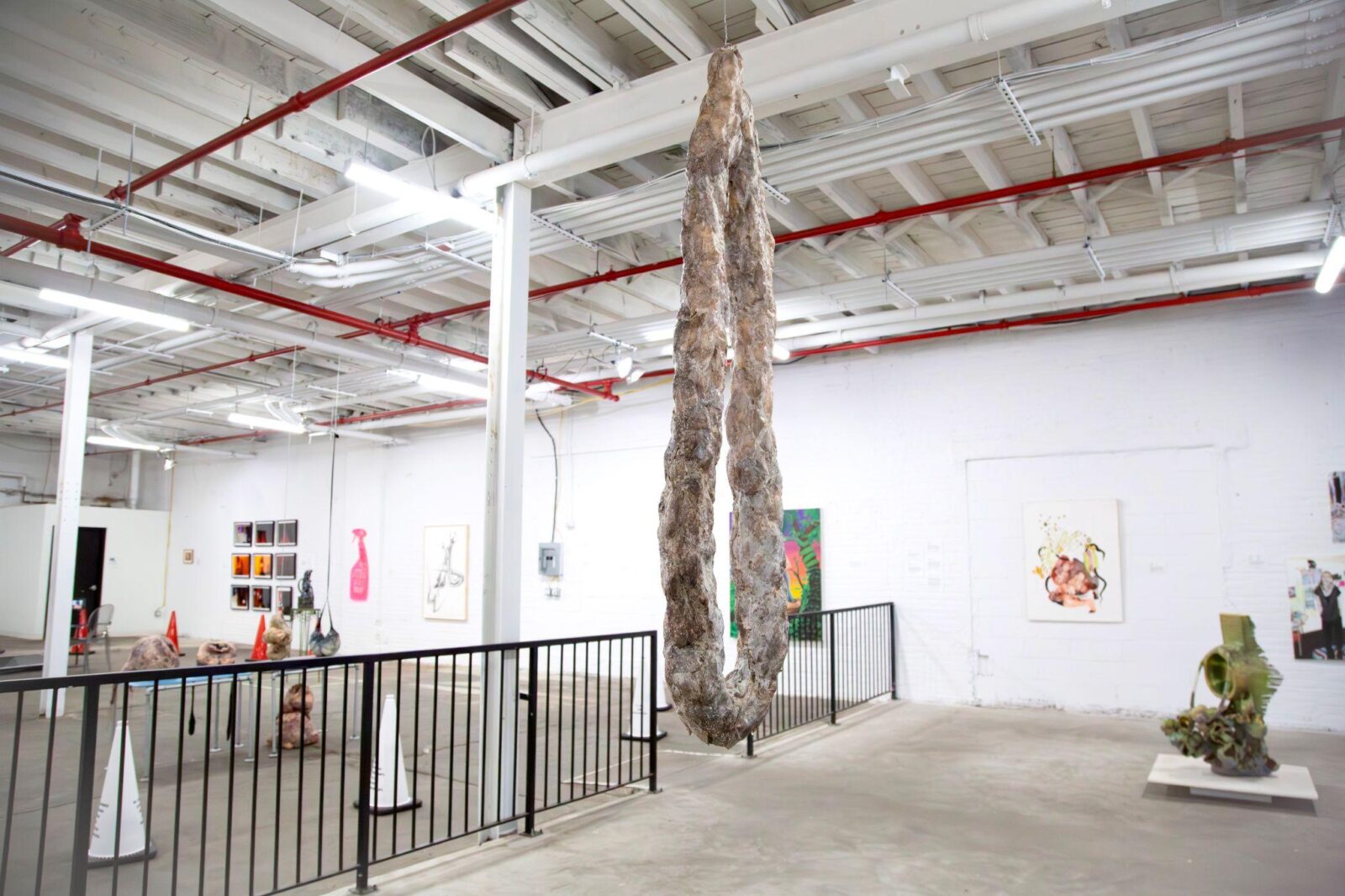
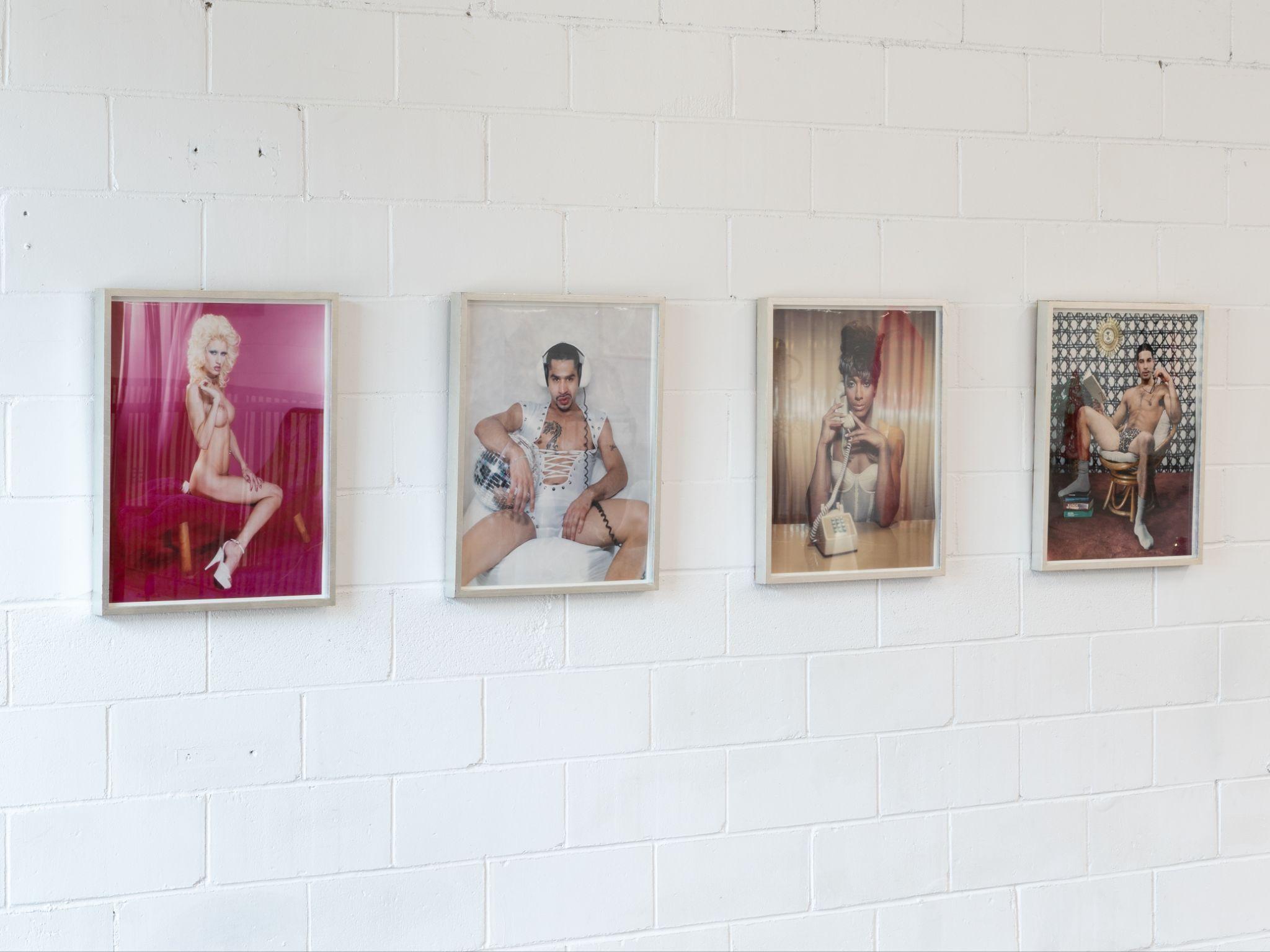
In the pop-up exhibition Soft Weapons, viewers are asked to consider the works of 29 artists in the context of “soft power” – a political approach underscored by attraction and persuasion. And, it’s bold. In democratic governments, soft power is the poster child of political diplomacy. As the shadow of authoritarianism grows larger in the U.S., so does the subversion of such diplomacy and, with that, the fist of hard power. Thus, curators Lydia Nobles and Cassandra Neyenesch have united nearly 60 artworks as a collective tool for resistance around the expansive conversations of abortion, body autonomy, and the embedded politicism of being female, or a woman. A follow up to the 2022 pop-up exhibition on abortion access organized by Neyenesch, this iteration succeeds at engaging more stories, broader dialogues, and deeper conversations sparked from the declaration “my body, my choice.”
The subjects of Aaron Cobbett’s photographs exude a fearless confidence as they gaze directly at the camera. The portraits are both a playful archive of the 90’s queer scene in NYC and an act of seduction on the part of the subject and photographer. Taken during the AIDS crisis as a celebration of folks beyond the hetero “norm,” the quartet of saccharine C prints counteract the weight of their history by embracing glamour, joy, and tease. Especially in Andres with Books, the aesthetic and conceptual links to David LaChappelle who also created portraits as an adorned tableau of identity celebration in the mid-1990s. Overall, the show is a medley of media and concepts around sub-themes like collective memory, surveillance, sensuality, care, counterculture, rebirth, and symbiosis.
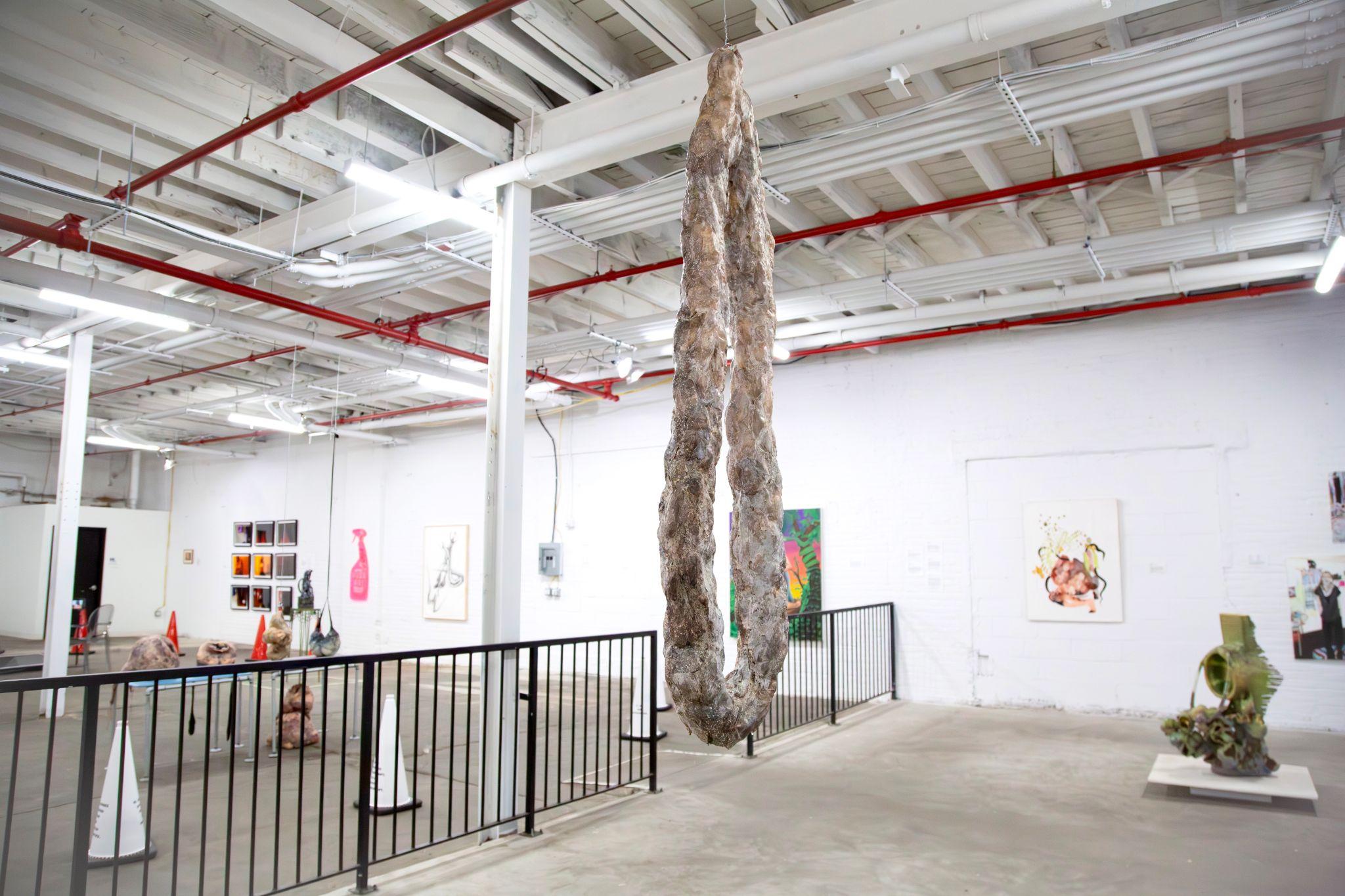
Installation view of Anna Ting Möller, Peril, 2023, Kombucha, epoxy, body, 78” x 35” x 12”. Photograph by Lydia Nobles, courtesy of the Artist and BolsterArts, New York.
Several works deliver on the show’s mission to transform each piece into a tool for change, creating a narrative through the space, including a large sculpture by Anna Ting Möller. Peril hangs still and low to the ground. Its shape and structure echo a hollow droplet of some foreign, viscous liquid that seemed to slowly stretch, then harden, then fossilize. The bulbous, bodily curves of its six-foot-tall stature bring to mind the composite construction of beehives or anthills; akin to such organic infrastructures, Möller has built the piece from kombucha SCOBY (symbiotic culture of bacteria and yeast) skins. Here, between the artist and her primary material, the roles of creator and caregiver are in constant flux to produce a corporeal form that challenges the identity of “Mother.”
Aptly curated throughout the center of the main room is the site-specific installation by Aliza Shvarts. Three sets of traffic cones interrupt the cold grey cement floor with their bright color waves of opaque red, black, and white. Arranged in curved paths and marked with numbered text on both sides, they guide viewers on silent quests to expose historical and modern contradictions surrounding human reproduction. The sharp, concise statements linger like the lump in a throat before crying and arm viewers with the truths that political power has long been used to control women, suppress women, and render their bodies insignificant beyond the ability to reproduce. If knowledge is power, this installation beckons anyone near to invoke its words like an incantation for change.
On October 27, Schvartz and Viva Ruiz spoke about bodily autonomy, queer outsiderness, calling into being, death threats, style, joy, beauty, learning from institutions versus nightlife versus sharing with peers, and their collaborative work at the gallery. Both have experienced severe backlash while advocating for bodily autonomy. In 2008, Schvartz’s video documentation and sculptural installation comprising her Yale thesis project in which she over the course of an academic year administered self-managed abortions was banned by the school. While Ruiz is the creator of public-facing multi-disciplinary project THANK GOD FOR ABORTION which has created T-shirts and centred marches around the slogan. “They are legends, both as artists making important performance work about and in and on the body, and as activists, with deep experience and care and community between them,” Christen Clifford wrote to Cultbytes. Her interior portraits of genital orifices are included in the exhibition.
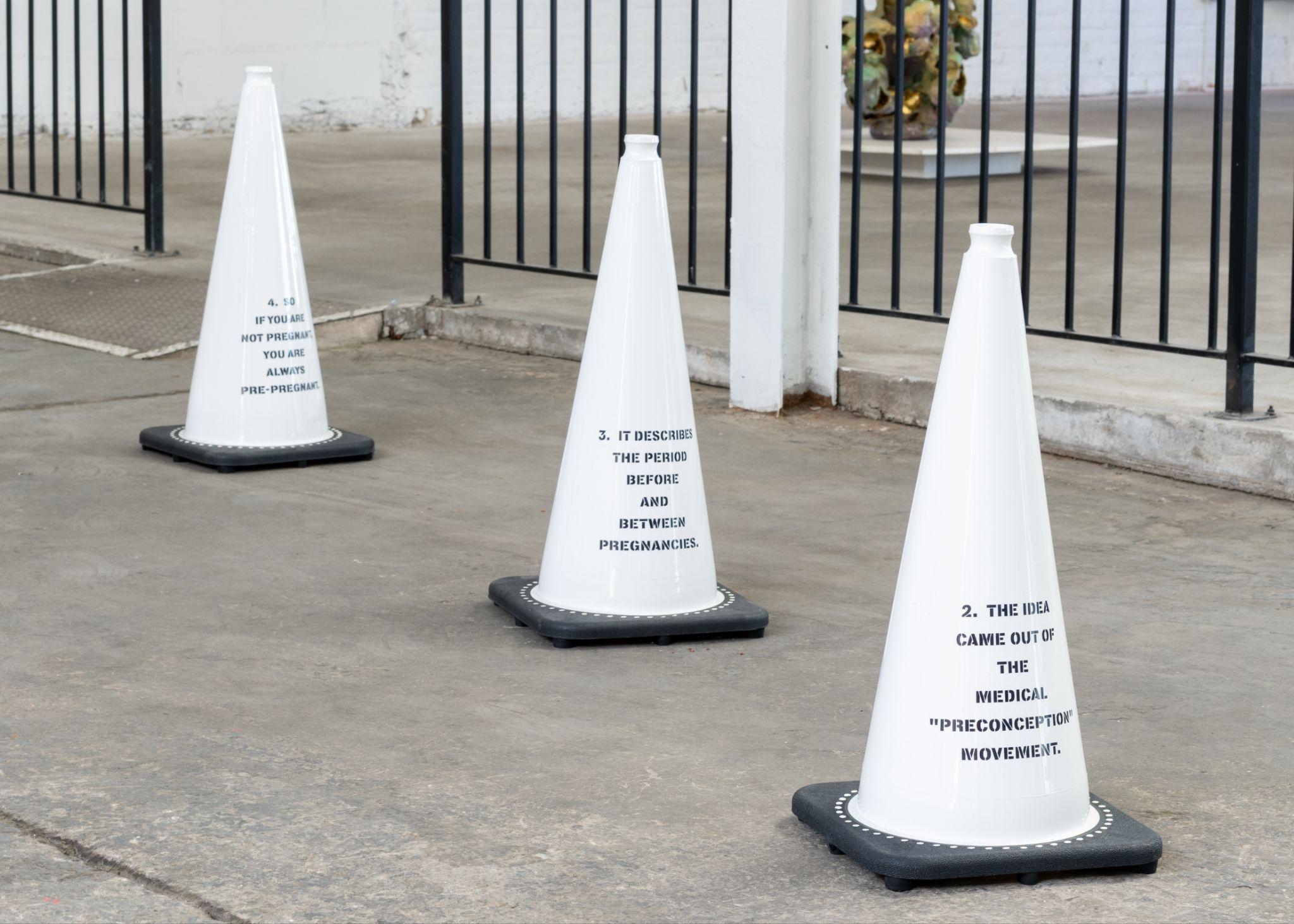
Aliza Shvarts. “Dark Play,” 2025. Invisible labyrinths via text and colored PVC cones. Size variable. Photograph by Aidan McLellan. Courtesy of the Artist and BolsterArts, New York.

Jo Shane and Shiloh Blue. “Estrogen Diaries,” 2025. Artist’s 0.075 mg estradiol patch, artist’s used intravaginal estriol 1 mg/gm syringe, artist’s estradiol and estriol prescription labels, artist’s estradiol 2mg tablet, fire extinguisher case, wood, LED light fixture, speaker, and audio. 36.5 x 26 x 5.5 in. Photographed by Kunning Huang. Courtesy of the artists.
On the wall near a corner, next to the electrical panel, the blue glow of a utility light illuminates contents of the mixed media work Estrogen Diaries. Visual artist Jo Shane and sound artist Shiloh Blue coalesce their hormonal experiences in this clinical display that hangs with cinematic glossiness. Its near-perfect fabrication mimics the impersonal design of medical devices. The artists’ prescriptions for Estradial, by comparison, and audio of the pair recounting anecdotes on aging and transition like slam poets, quickly pull viewers into the heart of the sculpture. The work is a kindred recognition of the freedoms they have exercised in pursuit of the women they each desire to be.
In the media room, two film projectors spin to life side-by-side color videos with hugged frames and nostalgic luminosity. The left plays Doing it for Daddy wherein the artist Ayanna Dozier acts out two scenes: one, on her hands and knees in lingerie, stripper heels, and a ribbed tank top oscillating between heady seduction, dutiful cleaning, and manic prayer. In the second, she mimes a bombshell secretary kneeling at the seat of a buttoned-up man, washing his bare feet. The tragically quintessential gender tropes of women as the obedient subordinate, tantalizing sex worker, loyal housewife, and “good Christian girl” are cleverly challenged as the scene plays out on outdated 16mm film with near-extinct equipment. Together with the its accompanying video aptly titled Nightwalker, this presentation begins to collapse the hierarchy of gender and uplift the power that exists in assuming such roles on one’s own terms.
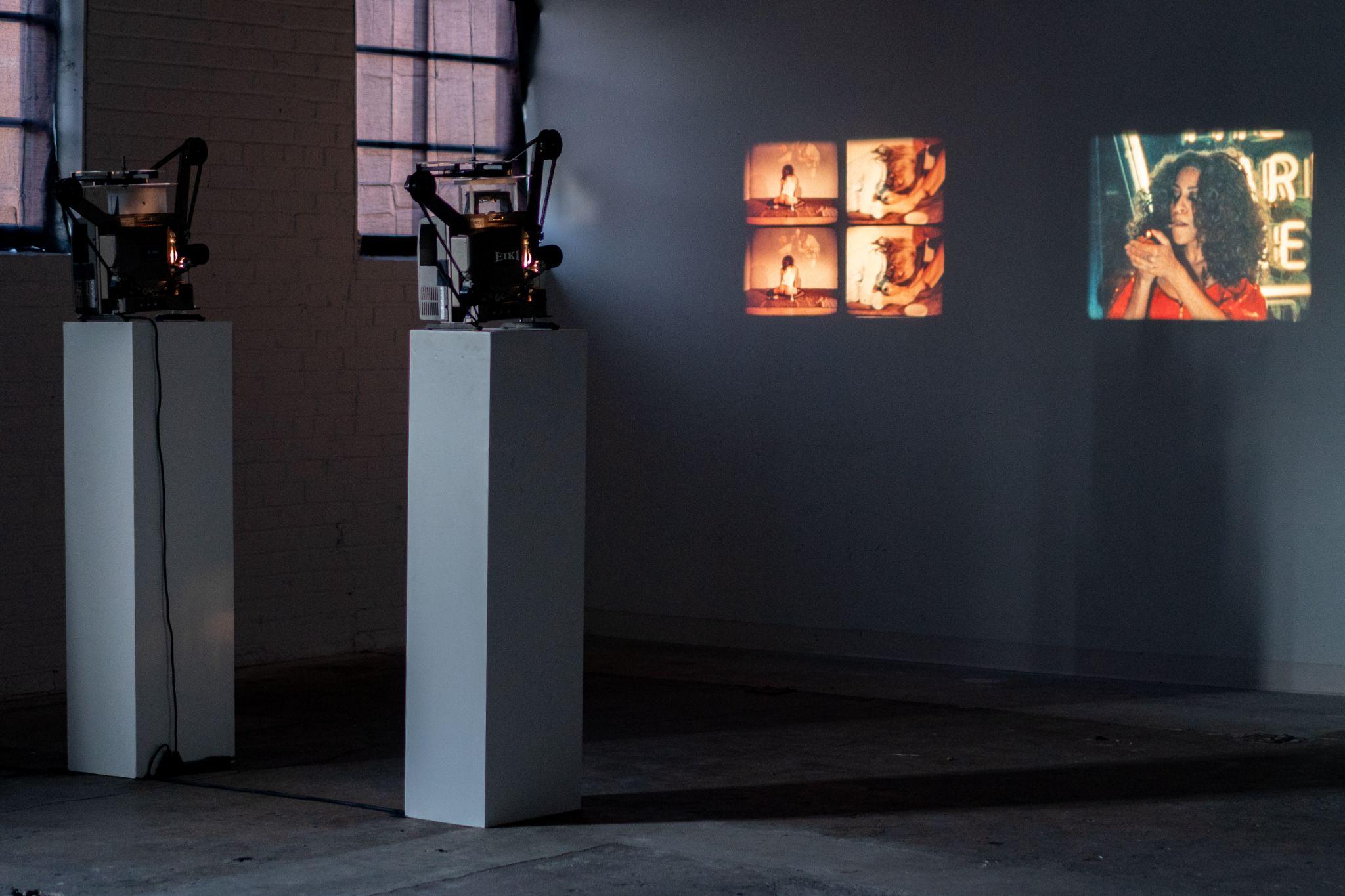
Ayanna Dozier. “Doing it for Daddy,” 2024. 16mm film, color, silent, 2 minutes, 50 seconds. Edition 1 of 5 (2 APs). Nightwalker, 2022. Super 8mm to 16mm film, color, sound, 6 minutes. Edition 2 of 5 (2 APs). Photographed by Aidan McLellan. Courtesy of the artist and Microscope Gallery, New York.
Beyond these anchor works: Annu Yadav’s installation, Contamination is a ritual of lifecycle and site for new growth. The group of waxy, truncated sculptures by Courtney Cone take an abject approach to body autonomy. Debra Cartwright’s Toxemia and Chris Cortez’s Inmaculada Concepción render two ends of the pregnancy spectrum marked by a seeming fate. Mary Enoch Elizabeth Baxter’s Ain’t I A Woman borrows contemporary storytelling formats to help in swallowing the pill of prison abortions.
The unifying act of Soft Weapons is granting permission to be shameless and fearless and unafraid to speak truth to power. In a barebones industrial setting, that message could easily be lost in the rafters. But its raw aesthetic instead translates as a blank slate – there is no ego or preconceptions except, perhaps, as a site for a new beginning. Soft Weapons takes no chances in its claiming of such space; every artist and their objects (and subjects) reveal as much or as little as they want, exerting free will in acts of resistance and as offerings for viewers to do the same.
Soft Weapons: Keep Your Fucking Hands Off My Body is on view through November 22, 2025 on 12 Franklin Street, Brooklyn, New York. Christen Clifford will perform on November 21.
What's Your Reaction?
Lauren Hirshfield is an independent curator, arts producer, and writer focusing on material transmutation, personal mythologies, themes of aspiration, collectivism, and eco-futurism. She is co-founder of the artist membership network and curatorial project PARADICE PALASE, and the founder of @temp.img, which presented and sold original art under $500 exclusively through Instagram. Her event series Supper Social aims to connect art professionals together in more intimate and intentional ways.

